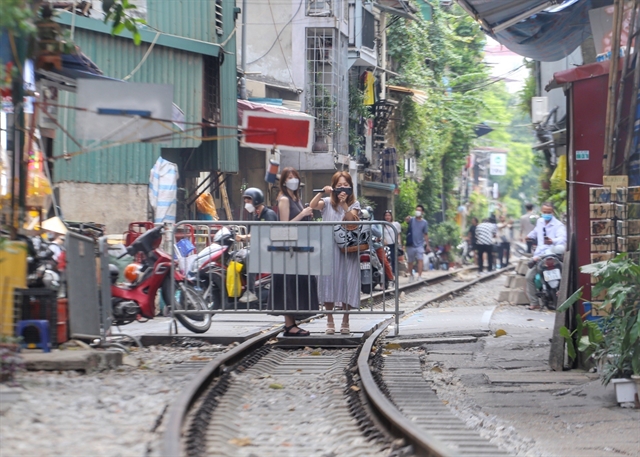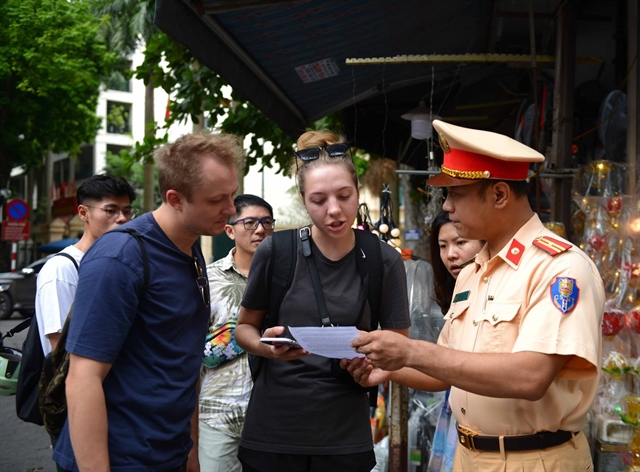 Society
Society

 |
| Barriers have been erected to block the entrance to coffee shops along the rail tracks in Hà Nội’s Old Quarter. — VNA/VNS Photo Tuấn Đức. |
HÀ NỘI — Việt Nam Railway Authority (VNRA) has announced that the operation of cafés right next to train tracks in Hà Nội’s Old Quarter must be stopped to ensure the safety of both local residents and tourists.
The decision was made following a meeting between VNRA, local authorities and cafe owners who petitioned against the closure of the train street, which has become a new popular tourist hot spot in recent years, especially for foreign visitors.
At the meeting, the authorities agreed that the business model alongside the railway track, which divides a street full of homes and cafes on either side, poses high risk of serious traffic accidents.
The safety of people must come first, they said.
VNRA said it would take measures to prevent mass gathering of tourists filming and taking photos on railways passing through Hoàn Kiếm, Ba Đình, Đống Đa and Hai Bà Trưng districts.
Those who violate traffic order and safety would be punished, it said.
Hà Nội's Train Street is a section of railway tracks that run alongside Điện Biên Phủ and Phùng Hưng streets. Residential buildings were built just a few metres away on either side of the track.
The 300-metre stretch of railway, which was built by the French more than 100 years ago, become one of the city’s most popular attractions when local people opened cafés alongside the track in 2019. Many tourists rushed to the tracks to take selfies or try to catch a moment of a train passing in front of them.
The city’s authority decided to erect barriers at the rail crossings to prevent tourists from entering the area due to safety risks. However, the situation has recurred since April.
In mid-September, Hoàn Kiếm District’s authority asked all café owners to close down their business and again set up barriers at the rail crossings.
These café owners have sent petitions to get permission to open their business and suggested safety measures to ensure people’s safety.
 |
| Police distributed English-Vietnamese bilingual leaflets to foreign tourists about the railway safety regulations. VNA/VNS Photo Phạm Kiên |
They proposed solutions such as distributing leaflets in Vietnamese, English, and French to visitors about railway safety regulations and train schedules, installing cameras in front of café shops, and setting up warning signs along the track.
VNRA said it agreed with local people’s suggestions. It proposed that the local authority work with VNR to educate people about railway traffic safety and provide schedules for trains passing through the area.
However, it said the suggestion of installing warning signs and electronic boards displaying the train schedule was infeasible due to the narrow area, which would affect the train driver’s concentration and interfere with railway signals.
VNRA would work with the Vietnam Railways Corporation to study the reduction of train speed and early closing of barriers to limit visitors from entering the railway neighbourhood.
Regarding solutions to strengthen professional tourism personnel, VNRA asked local authorities to coordinate with the city’s Department of Tourism and relevant units to respond to the recommendations of local people.
VNRA said it would ask the Ministry of Transport to guide the city’s authority to implement the railway traffic regulations in the coming time. — VNS




